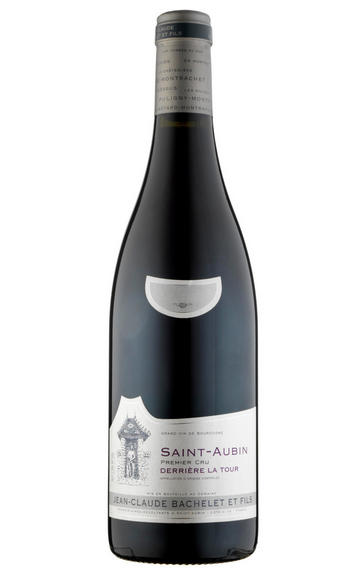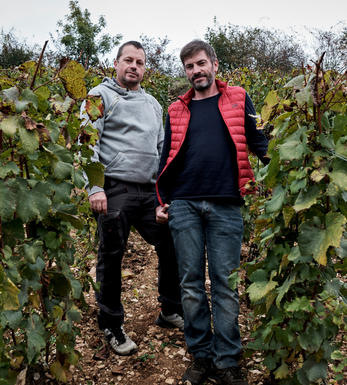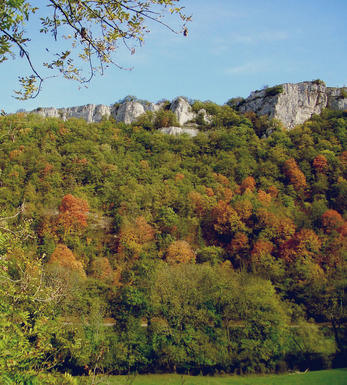
2020 St Aubin, Derrière La Tour, 1er Cru, Jean-Claude Bachelet & Fils, Burgundy

Critics reviews
Rich luscious purple with a heady bouquet, deep ripe cherry, still with an excellent freshness. Just a light blackcurrant leaf reduction. Moe complicated in the mouth where tannins and acidity are quite present and there is a slight hollow spot at the moment. Difficult to judge with this reduction.
Jasper Morris MW, InsideBurgundy.com (January 2022)
About this WINE

Jean-Claude Bachelet
Jean-Claude Bachelet is considered one of the most conscientious wine producers in St Aubin. The wines are exceptionally well balanced, with understated character and good medium-term ageing potential.
Benoît and Jean-Baptiste Bachelet now head up the estate, having taken over from their father Jean-Claude (who died in 2020). Jean-Claude previously sold much of the estate’s crop to négociants, but nowadays they bottle almost all their wines.
Benoît and Jean-Baptiste have now moved to superb new cellars in the hamlet of Gamay, next to St Aubin.
In the vineyard
The brothers have been experimenting with biodynamic viticulture in the vineyard and have plans to extend this across their holdings in St Aubin, Chassagne-Montrachet and Puligny-Montrachet.
In the winery
The basic principle of a long, slow barrel-ageing for almost two years remains in force, while the state-of-the-art winery has improved consistency.

Côte de Beaune
With its three musketeers of Chassagne-Montrachet, Puligny-Montrachet and Meursault, alongside the imperial Corton-Charlemagne, the Côte de Beaune is home to the finest Chardonnays in the world. It hosts seven of Burgundy's eight white Grands Crus, along with a single red Grand Cru. Ironically though, much more red wine is made in this southern half of the Côte d'Or than white.
Stretching 30km south past the town of Beaune to Cheilly-lès-Maranges, the Côte de Beaune has a more expansive feel and gentler slopes than the Côte de Nuits. Its finest Chardonnays are characterised by an incomparable intensity and complexity, while its Pinot Noirs generally have softness and finesse as their calling cards. The best reds come from Beaune, Pommard and Volnay, and the powerful Grand Cru of Corton.
As in the Côte de Nuits, the fragmentation of the Côte de Beaune's vineyards brings the single biggest hurdle for any wine lover, namely the unpredictability of its wine. The human factor is paramount, and sadly too many lazy or unscrupulous growers and merchants have produced disappointing wines from some of the region's greatest names, while their more talented and quality-minded neighbours craft exquisite examples from the same terroir. Happily, quality is now higher than it has ever been here and organic and biodynamic methods are increasingly popular – especially amongst the younger generation.
Wines labeled `Beaune' come from the appellation adjoining the town while those labeled Côte de Beaune (red or white) emanate from a group of vineyards on the hill above. Côte de Beaune Villages is a red wine that can be made from a number of lesser, named villages in the region, while Hautes-Côtes de Beaune (mostly red) is produced from vineyards in the hills to the west of the appellation, divided in two by St Romain. These tend to be light yet often fine wines, especially in hot years like 2003 and 2005.

Pinot Noir
Pinot Noir is probably the most frustrating, and at times infuriating, wine grape in the world. However when it is successful, it can produce some of the most sublime wines known to man. This thin-skinned grape which grows in small, tight bunches performs well on well-drained, deepish limestone based subsoils as are found on Burgundy's Côte d'Or.
Pinot Noir is more susceptible than other varieties to over cropping - concentration and varietal character disappear rapidly if yields are excessive and yields as little as 25hl/ha are the norm for some climats of the Côte d`Or.
Because of the thinness of the skins, Pinot Noir wines are lighter in colour, body and tannins. However the best wines have grip, complexity and an intensity of fruit seldom found in wine from other grapes. Young Pinot Noir can smell almost sweet, redolent with freshly crushed raspberries, cherries and redcurrants. When mature, the best wines develop a sensuous, silky mouth feel with the fruit flavours deepening and gamey "sous-bois" nuances emerging.
The best examples are still found in Burgundy, although Pinot Noir`s key role in Champagne should not be forgotten. It is grown throughout the world with notable success in the Carneros and Russian River Valley districts of California, and the Martinborough and Central Otago regions of New Zealand.


Buying options
Add to wishlist
Description
From a south-facing vineyard immediately above the hamlet of Gamay, this delivers immediate pleasure. There is a pure expression of the redcurrant end of Pinot Noir’s spectrum, both aromatically and with the energy on the palate. This is more than a simple, pretty wine; there is a surprisingly well-layered palate, with more strawberry notes among the sapid tannins.
Drink 2023 - 2028
Berry Bros. & Rudd
wine at a glance
Delivery and quality guarantee